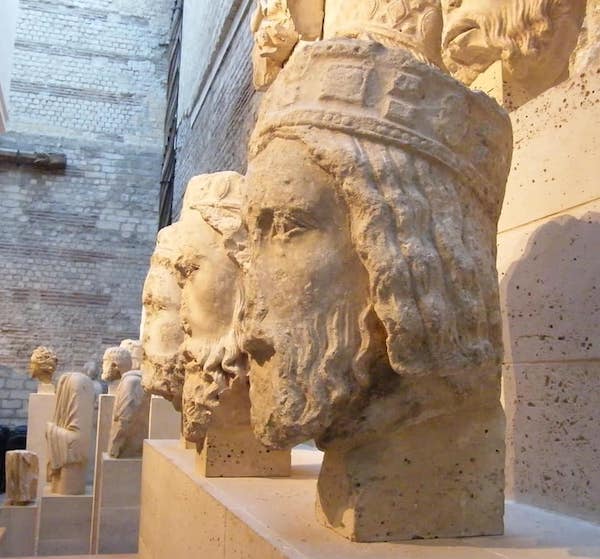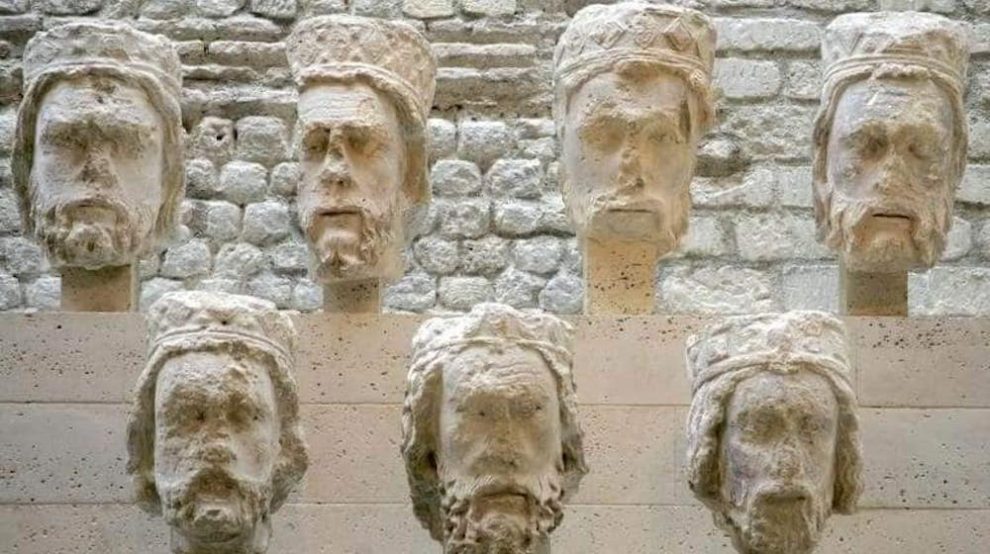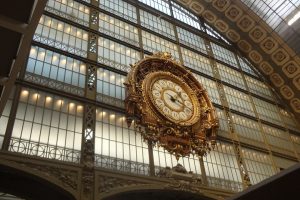At the Musée de Cluny-Musée du Moyen-Age (which will reopen in spring 2022 after) are exposed heads with extraordinary history. Created in the 13th century to decorate the King’s gallery of Notre-Dame de Paris, they were destroyed by revolutionaries and found in 1977 in a garden in the 9th arrondissement. One of the most significant archaeological finds of the 20th century.
Erected above the portals of Notre-Dame in the 13th century, the gallery of kings was at the time a great innovation. Architectural first, breaking the vertical lines of the facade by adding a long horizontal bar, and then symbolic, placing the kings of France as elected by God. In any case, this is what the population believed for centuries, until the French Revolution broke out …
In 1792, after the abolition of the monarchy, many statues were destroyed in Paris. The twenty-eight statues overlooking the west facade of Notre-Dame de Paris do not outrun this vast campaign of suppression of the symbols of the Ancien Régime. Taken by revolutionaries for effigies of the kings of France, they were beheaded. Thrown on the forecourt, we thought the heads were gone, sold as building stone or simply crushed.
But when in the 19th century the restoration of the monument was entrusted to Viollet-Le-Duc, historians agree that it was in fact a representation of the kings … of Judah! Ancestors of the Virgin Mary who would have reigned over this kingdom, rival of that of Israel, after the death of Solomon.

In 1977, the Hôtel Moreau, located 20, rue de la Chaussée d’Antin in the 9th arrondissement, which then belonged to the French Foreign Trade Bank, needed work. In the courtyard of the mansion are found nearly 400 fragments of sculpted stones. The specialists are clear: these are the heads of the gallery of the kings of Notre-Dame de Paris, beheaded two centuries ago. How did they get here ? Nobody knows. Neither how, nor why…
If the twenty-eight were not found, twenty-two of them could be restored, and are now visible in the museum. An extraordinary page of history.




Add Comment